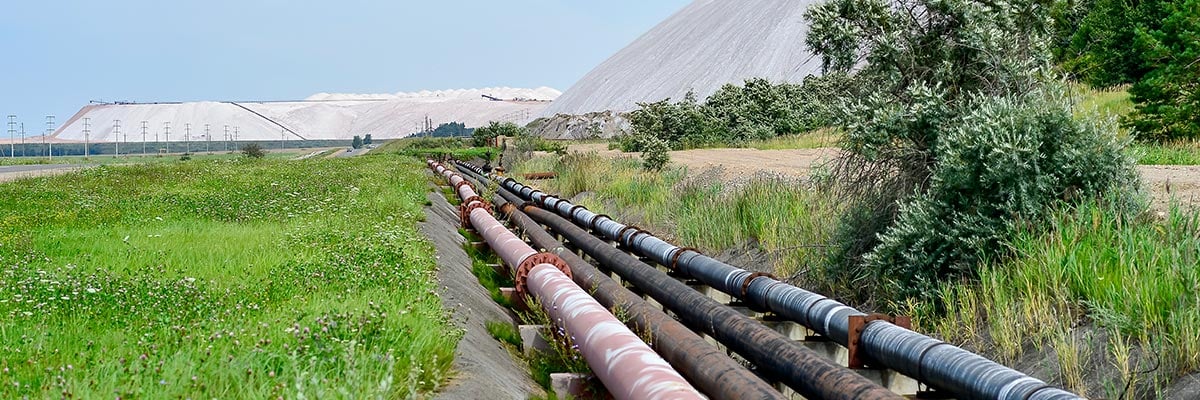
Dry Tailings Solutions: Technology Matters
Today, more than ever before, the Mining industry is looking for technical solutions to dewater mine tailings to eliminate the risk of tailings dam failures. But while there is growing industry consensus on the Why and possibly the When, the How is not that straight forward. A vast array of mechnical solutions exist that all promise to deliver dry tailings in a cost-effective way. This leaves miners in the difficult position to navigate the often confusing choices of emerging and established technologies, with engineering teams on sites conducting extensive trials to see what works for their operations.
The key evaluation criteria that mining and mineral processing companies consider while selecting tailings dewatering technologies are:
- Consistency of dewatered solids – preferably dry, stackable
- Clarity of filtrate/centrate for recovery and reuse
- Sound operating economy
What are the Pros and Cons of the most commonly used mechanical technologies available in the market today? Let’s take a closer look at some of the more commonly used products.
Paste Thickener thickens the tailings to a paste-like consistency which is then pumped for mine back-filling or surface paste disposal. In order to achieve this consistency a paste thickener typically has a deep cone design. It needs a fairly large dosage of flocculant and has to be equipped with high-torque drive heads to enable movement of the rake mechanism in the deep bed of solids. Pumping costs are generally high as positive displacement pumps are required for paste discharge. A high degree of supervision is needed to maintain bed depth and underflow consistency. Besides high CAPEX and OPEX, available literature suggests that the output of a paste thickener is difficult to control.
Filter Press incorporates recessed or chamber/recess plates in its design. It uses high filtration pressure to generate a dry solids cake. The filter press gives excellent solids capture when conditioned properly but involves a batch-type operation consisting of several steps. Modern filter press can be equipped with cloth shaking mechanism, automatic cloth washing device, etc, to reduce the manhours in this labour intensive process but are expensive to install. Even with these features, the filter cloth can get clogged due to fine clay particles resulting in prolonged filtration cycles and wear and tear to the filter cloth. Owing to its large footprint and the additional features the modern filter press has a high CAPEX. Changing the filter cloth due to rapid wear and tear and large wash water consumption plus frequent operator intervention lead to a high OPEX.
Belt Press achieves filtration by passing a pair of filtering cloths and belts through a system of rollers wherein the tailings solids are sandwiched between the two filtering cloths. It has low energy requirements and is simple to operate. However, the belt press has a large footprint and requires frequent maintenance and cleaning. Since it has a limited throughput capacity (a 3m x 3m belt press can dewater 20-25 t/h solids on dry basis) the number of units needed for tailings dewatering is high, resulting in high CAPEX. The belt press requires large dosage of flocculant to dewater tailings with fairly high clay content. Large quantities of wash water is required to keep the filtering cloths clean, adding to its OPEX.
Solid Bowl Centrifuge (SBC) consists of a horizontal bowl with a scroll conveyor inside it which is together referred to as the rotating assembly. The assembly spins around its own axis at high speed, thereby generating high centrifugal force that enables separation of tailings solids from the liquid. The separated solids are scrolled out by the conveyor in the form of a dry solids cake whereas the clear liquid (centrate) overflows the weir plates located at the opposite end. Although the SBC technology has existed for several decades it is only in the past 8-10 years that design improvements made by Alfa Laval in wear protection of key components, coupled with changes in its geometry and operating philosophy, have enabled the SBC to be utilized to deliver high solids cake concentration, even at high flow rates. Centrifuge technology requires moderate dosage of flocculant in some tailings dewatering applications but has the highest unit capacity per footprint. As well as having a relatively lower CAPEX, the OPEX is favourable due to its high throughput and lower lifecycle costs.
When comparing options for mechanical dewatering, my advice is to consider the following factors to calculate CAPEX and OPEX correctly:
- Footprint size, ancillary equipment and installation cost
- Unit capacity and daily throughput
- Durability of the material of construction
- Operating cost including wash water, flocculant, labour, power, compressed air, solids transport, etc.
- Availability of service support and cost of maintenance (lifecycle cost)
Wherever possible, it is a good idea to carry out pilot tests or lab-scale tests to evaluate the quality of separated solids in terms of its moisture content and stackability as well as solids’ abrasiveness besides checking the filtrate/centrate clarity.
Whitepaper: Comparative cost analysis of dewatering technologies
Mechanical dewatering with solid bowl centrifuges is revolutionising tailings dewatering in mining and minerals and it pays to compare the costs side-by-side with conventional technologies.
With 18 months of extensive research based on input data directly from coal washing plants in Australia, this report guarantees to give you new insights. Download your copy of the new Alfa Laval whitepaper today.
You might also be interested in
Alfa Laval Mining & Mineral Processing Webinars
Curious to learn more? Join the Alfa Laval webinar series discussing challenges and solutions for the mining and minerals processing industry. Equip yourself with the knowledge to design, maintain and manage production processes with high efficiency and minimal operational and environmental risk.

